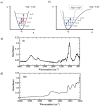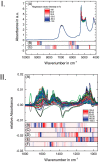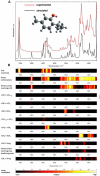Near-Infrared Spectroscopy in Bio-Applications
- PMID: 32604876
- PMCID: PMC7357077
- DOI: 10.3390/molecules25122948
Near-Infrared Spectroscopy in Bio-Applications
Abstract
Near-infrared (NIR) spectroscopy occupies a specific spot across the field of bioscience and related disciplines. Its characteristics and application potential differs from infrared (IR) or Raman spectroscopy. This vibrational spectroscopy technique elucidates molecular information from the examined sample by measuring absorption bands resulting from overtones and combination excitations. Recent decades brought significant progress in the instrumentation (e.g., miniaturized spectrometers) and spectral analysis methods (e.g., spectral image processing and analysis, quantum chemical calculation of NIR spectra), which made notable impact on its applicability. This review aims to present NIR spectroscopy as a matured technique, yet with great potential for further advances in several directions throughout broadly understood bio-applications. Its practical value is critically assessed and compared with competing techniques. Attention is given to link the bio-application potential of NIR spectroscopy with its fundamental characteristics and principal features of NIR spectra.
Keywords: NIR; NIRS; analytical; bioscience; biospectroscopy; near-infrared spectroscopy.
Conflict of interest statement
The authors declare no conflict of interest.
Figures















References
-
- Ozaki Y., Huck C.W., Beć K.B. Near-IR spectroscopy and its applications. In: Gupta V.P., editor. Molecular and Laser Spectroscopy. Advances and Applications. Elsevier; San Diego, CA, USA: 2018. pp. 11–38.
-
- Beć K.B., Grabska J., Huck C.W. Molecular and bioanalytical applications of infrared spectroscopy—A review. Anal. Chim. Acta. 2020 in press. - PubMed
-
- Barańska M., Roman M., Majzner K. General overview on vibrational spectroscopy applied in biology and medicine. In: Barańska M., editor. Optical Spectroscopy and Computational Methods in Biology and Medicine. Challenges and Advances in Computational Chemistry and Physics. Volume 14 Springer; Dordrecht, The Netherlands: 2014.
Publication types
MeSH terms
Substances
LinkOut - more resources
Full Text Sources
Medical
Miscellaneous

